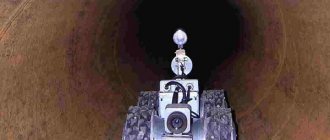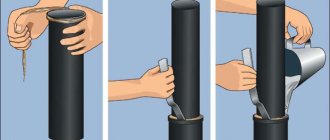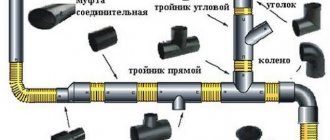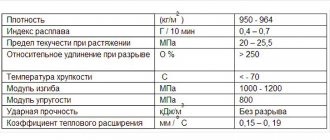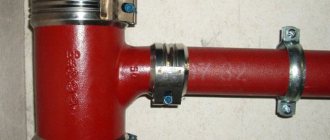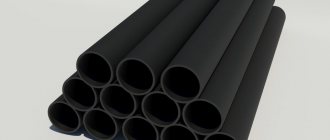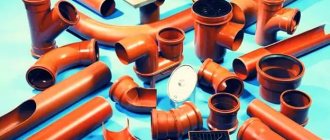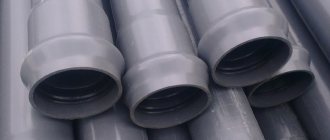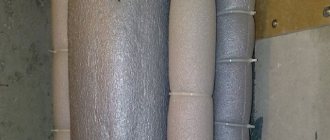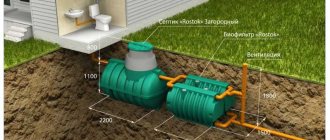CJSC "Expertise of Communal Networks" conducts teleinspections of water and sewer pipes (sewer diagnostics), gas pipelines, stormwater, drainage systems, heating networks, cable lines and communications (for example, telephone sewerage), and other pipeline communications in all regions.
There is a van-based diagnostic laboratory for teleinspection of sewerage and other pipes, including specialized robots, pushing devices and professional endoscopes, a floating module in the form of a raft (for main sewers with intense flow).
We carry out tele-inspection and diagnostics of pipelines, as well as main collectors of storm and domestic sewerage of any size, blockage and filling, search for lost and buried wells (under ground, asphalt), identify damage and defects in pipes, determine the routing of pipelines and sewerage (clarification of location on terrain) using teleinspection and sounding methods:
- Diameters from 3 cm to 2 m.
- The lengths of “spans” (the length of the survey between entry points into the pipeline) can reach 200 m or more.
- Teleinspection is carried out at different pipe fillings and sediment levels, both with a temporary stop in flow and during normal operation of the network.
Television diagnostics of pipes (television of pipes) with a video camera allows you to determine the location of damage, cracks, displacement of joints, corrosion zones and other defects, and assess the technical condition of the pipeline. During the inspection, potentially emergency areas, violations, deficiencies, and causes of possible blockages are identified. Also, television inspection is necessary to search for lost wells underground (soil, asphalt) when tracing sewers and other communications.
Prices for teleinspection services for pipes and sewers
Television inspection of pipes and sewerage - from 100 rubles/m
Find out prices in more detail
Carrying out a television inspection of the sewer system in case of frequent blockages, its long service life, accidents or a high degree of wear. Based on the results of video diagnostics of pipes, technical conclusions and recommendations are issued that allow the most effective planning of measures for the repair and reconstruction of networks, making decisions on the feasibility of relaying pipelines, sanitizing and selecting the most emergency sections of pipes.
VIDEO: TV inspection. Sewer video diagnostics
Television sewer inspection. This video shows how, with the help of a television inspection, the cause of frequent blockages in the sewer system was found, namely a tool (building level) forgotten by workers when installing the sewer system.
After the diagnosis has been carried out, all that remains is to choose the most effective method of cleaning sewer pipes, or decide to repair the damaged area. Timely diagnosis is a guarantee of stable operation of sewerage systems, treatment and drainage communications.
To contents
Cost of services
1. Tele-inspection, video diagnostics, tele-diagnostics of pipes, sewerage and storm water pipelines, video camera inspection - from 120 rubles/m
2. Search for water and heat leaks in pipelines, underground - from 100 rubles/m
3. Expertise, diagnostics and inspection of the technical condition of heating systems, heating networks, water supply and sewerage systems, assessment of the level of wear and the possibility of further operation - from 150 rubles/m
4. Search for lost (buried, paved) sewerage and water supply wells - from 150 rubles/m
5. Search for engineering systems, communications, cables and pipelines underground, tracing of water supply pipes, heating networks, sewerage - from 120 rubles/m
6. Inspection of water supply, engineering and plumbing knowledge systems (heating, water supply, sewerage, drainage) - from 150 rub./m
7. Measuring water and wastewater flow in pressure and gravity pipelines, canals, wells - from 20,000 rubles.
When is video inspection of sewer pipes necessary?
The relevance of using video recording equipment in the early detection of wear on pipeline walls, which allows you to avoid major leaks or kinks through timely strengthening of weak areas.
Video monitoring is required:
- To accurately determine the location of damage and subsequent repairs.
- If you need to connect to an existing sewer system. The procedure allows you to evaluate the possibility and conditions of connection.
- When there is a blockage in the sewer system of a public building. The equipment allows you to quickly find the location of the jam and eliminate it. When performing routine diagnostics, it is easy to find places where growths or deposits are likely to form.
- When searching for an abandoned well or restoring the layout of utility lines.
- To check the condition of new sewer systems put into operation. The quality of installation work is checked and possible defects are identified
- To check the condition of connecting seams and joints, to detect places of illegal tapping.
Videos on teleinspection of pipes and sewerage
Teleinspection of storm sewer pipes
The BK3M robotic complex based on the P100 robot is used
Teleinspection of sewer pipes
Teleinspection of the sewer collector
The robotic complex CM2-DR is used based on the floating module W100
Teleinspection of industrial sewerage pipes
Uses push system CMO/TV5-50LC-1V/BK4-150/VM11-100
Teleinspection of the domestic sewerage collector
The W100 floating module of the CM2-DR robotic complex is used
When video diagnostics of communications is necessary:
- TV inspection is mandatory - when commissioning new utility networks and chimneys;
- in the event of blockages or unsatisfactory operation of utilities;
- as part of a technical inspection of a structure during purchase, sale, reconstruction, repair, etc.;
- before and after cleaning, repair, reconstruction of the system.
Teleinspection allows you to evaluate the quality and correctness of installation of water pipes, sewer pipes, drains, air duct systems, chimneys, and correlate their actual layout and plan.
The video camera is controlled by a television operator who has undergone special training and has knowledge in materials science and identifying network defects. An experienced specialist can see at first glance what the degree of degradation of the material is, predict the cause of the problem with high accuracy, and can assess the quality of water by the resulting salt “scale.”
If the design documentation for the utility network is lost or there is no plan for it, during a video inspection specialists can draw up two-dimensional and three-dimensional maps of the object.
Our advantages
Experience and reliability
has been providing engineering services for inspection, diagnostics and examination of pipeline networks for 15 years. We employ only highly qualified water supply and water supply engineers. During this time, hundreds of successfully completed works in different regions of the country, grateful reviews from clients were received, and strong partnerships were built with many design and survey institutions, construction companies, and equipment suppliers.
Powerful instrument base
The company has dozens of pieces of equipment owned by the enterprise. We have the opportunity to perform work using several technologies and different types of instruments at once, and, by comparing the results, achieve the most reliable data, minimizing the likelihood of error. Often people come to us after bad experiences with other companies, and we find a solution to the problem.
Flexibility and mobility, following the client
In urgent and emergency cases, we are ready to go to the customer immediately and without prepayment. We take on complex and non-standard cases. Taking into account the requirements and wishes of clients, we are always focused on long-term cooperation.
Quality of services and responsibility
The company is accredited as a forensic institution; our reports and expert opinions are accepted by government and judicial authorities. Survey results and conclusions are always as substantiated as possible, and the equipment is certified and properly verified. We value our reputation.
Independence and confidentiality
We are professionals and respect our work and our clients. We carry out all work conscientiously and on time. The independence of the enterprise guarantees the objectivity of expert examinations and the maintenance of complete confidentiality. We have an individual approach to each client, since each case in our work is unique in its own way.
Video diagnostics of chimneys
Chimneys need to be checked regularly to avoid problems that threaten health and even life.
During operation, soot accumulates in them and stove wells, which can block the chimney or critically narrow its clearance. In this case, the stove draft will become minimal, the stove will emit smoke into the room - this causes poisoning, soot particles settle on all surfaces.
Another danger is the ignition of soot when it accumulates in large quantities. It can lead to destruction of the stove, fireplace, or fire.
In addition to contamination with soot, chimneys made of brick and stone are susceptible to destruction. The masonry crumbles, individual bricks can fall out and block the gap. Metal chimneys burn out over time, and fire can escape into the resulting cracks, which leads to a fire.
Tele-inspection of chimneys will help prevent the listed problems - detect significant accumulations of soot, the beginning of destruction of the masonry, wear of pipes, cracks, etc. If a problem does arise, telediagnosis will allow you to quickly find the cause and determine what to do next - clean, liner, completely repair, etc.
If you carry out a tele-inspection of your chimney regularly, you will significantly extend its service life, avoid dangerous situations and time-consuming repairs.
Teleinspection of pipes and channels: operating principle of the equipment
The system makes it possible to use a video camera to observe the processes that occur inside pipelines. The main piece of equipment is a video camera for transmitting images. Tele-inspection of pipelines makes it possible to perform a detailed inspection of all pipes without the need to dismantle them. The camera moves through the pipe on a self-propelled robot, raft or using a cable. To increase diagnostic information, the light source is moved along with the camera.
To perform tele-inspection of pipelines, equipment is selected depending on the diameter, configuration and filling of pipes. A television inspection of the sewer system is carried out before the start of repair work to determine its location and volume. After removing the blockage, diagnostics makes it possible to determine the quality and effectiveness of the work performed. To reduce the risk of emergency situations, telediagnosis is carried out regularly.
They often carry out diagnostics of new pipelines or sections after major repairs in the presence of the customer to confirm the quality of the work performed. Also, such an examination allows you to identify unauthorized insertion.
Pipeline diagnostics, inspection of pipes and wells
| Teleinspection allows you to quickly find problem areas of pipelines without digging trenches. |
Damage or blockage in the pipeline can cause serious problems that require immediate attention. Before the advent of the video diagnostic method, to remove various faults it was necessary to dig long trenches, which took a lot of time and effort.
Today, these labor-intensive works are replaced by convenient and efficient television inspection, which allows you to quickly examine problem areas of pipeline systems to most accurately determine the nature of the destruction and its location.
Teleinspection makes it possible to find and eliminate almost any blockage and eliminate the damage in a timely manner, preventing the occurrence of emergency situations. Diagnostics can be carried out both before the start of work on creating communications in order to identify the presence of “problem areas”, and after their completion.
An important advantage of this system is the ability to conduct research at a depth of up to 10 meters, with a pipeline diameter of 50 - 1200 mm.
Possibilities of the pipeline television diagnostic method:
• quick determination of the cause of the blockage; • identification of the type and nature of damage; • determination of the most accurate position of damage in order to carry out the necessary repair work; • designation of places for replacing pipes without the need to dig trenches.
Based on the readings of the television inspection data meter, after taking all the necessary measurements and taking into account the distance traveled, the location of the communications system is determined, which greatly simplifies the task of drawing up estimates.
Teleinspection during pipeline rehabilitation
Regardless of what material the water supply or sewerage pipes are made of, their capacity only decreases every year for a number of objective reasons. If there is a sharp decrease in the performance characteristics of pipelines, you should immediately carry out professional sanitation of the water supply or sewer pipes.
Sanitation is a set of technical measures aimed at restoring the integrity, tightness and maximum throughput of the pipeline. The technique for carrying out sanitization work depends on the reasons that caused the deterioration of the technical characteristics of the pipeline and the variety of professional equipment and materials. The choice of method for restoring the maximum capacity of a pipe or its tightness depends on a number of factors:
• pipe diameter and length; • material from which the pipeline is made; • level of damage or degree of contamination; • purposes of further operation of the pipeline.
To select the most appropriate sanitation technology, flushing of the pipeline and its thorough television inspection . For washing, hydrodynamic or mechanical cleaning methods are used. In case of large contamination, the internal contents of the pipeline are first removed with special equipment. Tele-inspection is carried out to identify damage on the internal surface of the pipeline.
The following methods of pipeline rehabilitation are distinguished:
• Application of various coatings (cement-sand mixtures or coatings based on epoxy resins); • Installation of soft polymer hoses; • Introduction of smaller diameter pipes; • Repairing damage using sheet patches; • Use of spiral polymers from modern composite materials as shells or coatings.
Rehabilitation of pipes should be carried out not only to restore the throughput capacity of the pipeline, but also to improve its quality characteristics. This is due to the fact that even in a drinking water supply, after a short period of time, various salts are deposited on the internal surfaces of the pipe.
As a result of pipeline rehabilitation, all of its technical characteristics are significantly improved:
• The service life of pipelines increases; • Corrosion of metal pipelines is prevented; • Prevents mineralization and growth of pipelines by vegetation; • The overall capacity of the pipe increases; • Electricity costs for pumping water are reduced; • The high quality of transported water for drinking or technical needs is maintained.
To contents
Equipment for teleinspection of pipelines and sewerage
The laboratory includes various types of equipment for any conditions during work, depending on the diameter, degree of clogging, and filling level of pipes:
- Tele-inspection complexes (pushing systems) SMO\TV5-50LC-1V\ВК4-150\VM11-100 and endoscope video cameras are designed for tele-inspection of pipes with an internal diameter from 30 mm to 600 mm using pushing. There are special nozzles for different pipe sizes. The length of the surveyed area (length of the cable rod) reaches 100 m.
- The self-propelled robot P100/BK3M is designed for telescopic inspection of various pipeline communications with an internal diameter from 300 mm to 2000 mm using a transport module equipped with bright lights. The length of the surveyed area (cable length) reaches 200 m.
- The floating module of the robotic teleinspection kit CM2-DR/W100 (based on a floating raft), designed for large-diameter sewer collectors (from 500 mm to 2000 mm) with water flow, is equipped with powerful lighting.
Equipment used
Video diagnostics for sewer pipes can be carried out by systems that differ in modification and type of design. Their basic part has identical elements. It consists of equipment:
- surveillance cameras that are placed in the sewer;
- places for unwinding the camera and monitor cables for visual inspection;
- a rigid cord for pushing the camera;
- LEDs designed to improve illumination during video shooting;
- sensors for determining distance;
- monitor to display images from a surveillance camera.
The surveillance camera is designed in such a way as to focus the footage in the center. This allows the operator to view the walls of the sewer pipe in full. The chamber is also made with increased protection from moisture and dirt particles.
Pipe
With a rigid cord, you can change the camera's shooting direction. This allows you to examine in detail the required section of the sewer system. A device with sensors that determine the distance traveled by the device. This allows you to accurately determine the location of the blockage or damage. When using the device without a connecting cable, control using the remote control.
Feedback from V. A. Erin - head of the department of the mayor's office of the Tolyatti city district
The activities of JSC "Ekspetiza Utility Networks" in tele-inspection of rainwater drainage networks in the Central District of the Togliatti city district are assessed as positive. There are no complaints about the quality of the work performed.
The work was carried out in accordance with regulatory and technical requirements and safety regulations, using advanced technical means.
All contractual deadlines for completing the work were met.
During its activity, the organization has established itself as a reliable partner with competent specialists. The results are of practical value for the urban services department and will be used in our work on the repair and maintenance of storm drainage networks.
02.02.2011
Types of television inspection systems
There are various types of television inspections. Their design and characteristics may differ depending on the tasks being solved. The complexity of the sewer pipes is important. Based on the method of action, floating and pushing devices are distinguished.
Pipe destruction
Teleinspection systems for sewerage are divided into the following types:
- Pushing - they are based on a rigid cord with a cable to transmit the image to the video surveillance monitor. The cord is used to push the DVR through the internal cavity.
- Self-propelled - capable of independently moving through pipe channels using remote control.
- Satellite – such systems are equipped with two or more video cameras. They are designed for comprehensive analysis of sewer pipes with many branches.
The systems are designed to work in pipes with a diameter of 25 to 2000 millimeters. The duration of the device depends on the specific modification. The longest operating length of the device is 250 meters. Systems are currently being developed for work lengths of up to five hundred meters.
Repair work
The simplest systems for monitoring the condition of pipes only allow the image to be transmitted to the operator’s monitor. When using more advanced systems, you can use the video recording mode for further detailed analysis. Systems differ in the type of camera used. They have an extension; the higher it is, the better the quality of the image transmitted to the operator’s monitor. Modifications of devices differ in functionality and price.
Sewage pipe
Using a sewer teleinspection system allows you to obtain information about their condition. The procedure for performing the work is simple and does not require much labor. With the systems, it is possible to quickly identify and eliminate defects without dismantling the existing sewer pipe. This reduces the risk of major emergency breakdowns, which are accompanied by large economic costs and detrimental impacts on the environment.
Feedback from the director of MUP "Vodokanal" Klimovsk (A.N. Detkovsky)
CJSC "Expertise of Utility Networks" has been working with us for about a year, helping to localize damage to the water supply system, trace networks, conduct television inspections of pipelines, and flush out sewers. At first, we cooperated mainly in emergency situations, but now we carry out most activities as planned.
I would like to note the high quality of the work performed, efficiency and effectiveness. If any unforeseen situation happens in our network economy, I know who to turn to!
29.12.2008
Video inspection of ventilation systems
Teleinspection of ventilation systems using an endoscope is the fastest and most informative way to detect problems, “weak spots” in ventilation, establish the reasons for a decrease in its efficiency, and prevent failure.
Tele-inspection of the air duct - in order to avoid major problems - should be carried out regularly. But there are cases when the check needs to be done in the near future or immediately:
- if there is a blockage and air exchange is disrupted;
- system efficiency has decreased;
- a new or modernized, reconstructed system is put into operation - video diagnostics of hard-to-reach places checks the cleanliness of the air ducts from construction debris, foreign objects, and the compliance of the air ducts with the plan and standards;
- before cleaning the ventilation system - to assess the condition of the air ducts, the degree of contamination and type of contamination, and draw up an effective cleaning plan;
- after cleaning the air ducts - to assess the quality;
- before reconstruction, repair, modernization of the ventilation system;
- as part of a technical assessment of a premises or building before sale, purchase, renovation, or other large-scale work.
How is the TV inspection carried out?
The video endoscope is inserted into the ventilation system, moved through the channels using a rigid cable, and a complete picture of the internal state of the air ducts is obtained on the display. The endoscope has a wide image capture angle, the video camera can be rotated, and the walls are illuminated by a backlight - such a device is effective even for checking hard-to-reach places. If a blockage or other problem is detected, a television inspection will allow you to pinpoint the exact location.
The operator controls the video endoscope. The image can be transferred to a computer or smartphone, the video is recorded so that you can watch it again if necessary.
Video diagnostic tools
Various means can be used for remote inspection of sewer pipes or other mains. The main thing is to obtain accurate information about the state of the system. At the first stage of cooperation, specialists analyze the task at hand and, based on technical requirements, choose the optimal method of video diagnostics.
Types of equipment:
- On a telescopic handle. A small camera is installed on the working side, and a monitor is mounted at the handle. Some models provide the ability to change the viewing angle by the operator. They are used to study small areas of pipelines.
- Camera on a flexible cable. With its help, you can see the state of the highway at a distance of up to 100 m from the entry point. These are push-type models, convenient for analyzing small diameter pipes - from 25 mm.
- Robotic complexes. They consist of an autonomous moving platform and a remote control. The camera can be rotated and there may be several lighting points. Such systems are capable of inspecting pipes at a distance of up to 150 m.
Each type of equipment can record a video signal for further processing and analysis. Effective video diagnostics of storm sewers and household waste disposal systems can be performed in several ways. First, an express analysis is done, then complex robotic systems are connected.
What does the cost depend on?
For standard orders, the price of sewer video diagnostics depends only on the distance of the area being examined. Additionally, the type of technology used is taken into account. The cost is calculated in rubles per 1 m.p. But there are a number of conditions that influence the formation of the final price.
Possible difficulties when conducting a television inspection:
- Pipeline diagram. The more rotating nodes and branches, the more difficult it is to reach the inspection point.
- Line diameter. For larger sections, the area under study increases, which requires more time for video recording.
- Conditions. If the pipeline is clogged, there is a lot of debris, previously there were aggressive substances (compositions) in it, additional protection for the equipment is needed.
- The need for a distance meter. This way you can determine the exact location of defects and problem areas on the pipeline diagram.
The final cost of video diagnostics can be determined only after analyzing the work site. To calculate a preliminary price, you can study standard prices. An alternative is to send an application, indicating the primary data. Specialists will draw up a work plan and an approximate estimate. In the future, details can be discussed over the phone or during a personal meeting at the company’s representative office.
